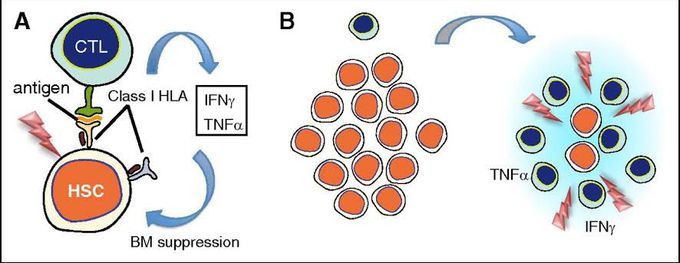


Acquired aplastic anaemia
Acquired aplastic anemia is a rare, serious blood disorder, due to failure of the bone marrow failure to produce blood cells. Bone marrow is the spongy substance found in the center of the bones of the body, in adults mainly the spine, pelvis, and large bones of the legs. The bone marrow contains hematopoietic stem cells. Stem cells can produce more stem cells (self-renewal) and also differentiate and proliferate, giving rise to red blood cells (erythrocytes), white blood cells (leukocytes), and platelets. In acquired aplastic anemia, an almost complete absence of hematopoietic stem cells results in low levels of red and white blood cells and platelets (pancytopenia). Symptoms of aplastic anemia are those of anemia, bleeding, and infection. Although bone marrow failure can occur secondary to other disorders, most aplastic anemia is due to the immune system mistakenly targeting the bone marrow (autoimmunity). Indeed, most patients can respond to therapy that suppresses the immune system, usually ATG and cyclosporine.

